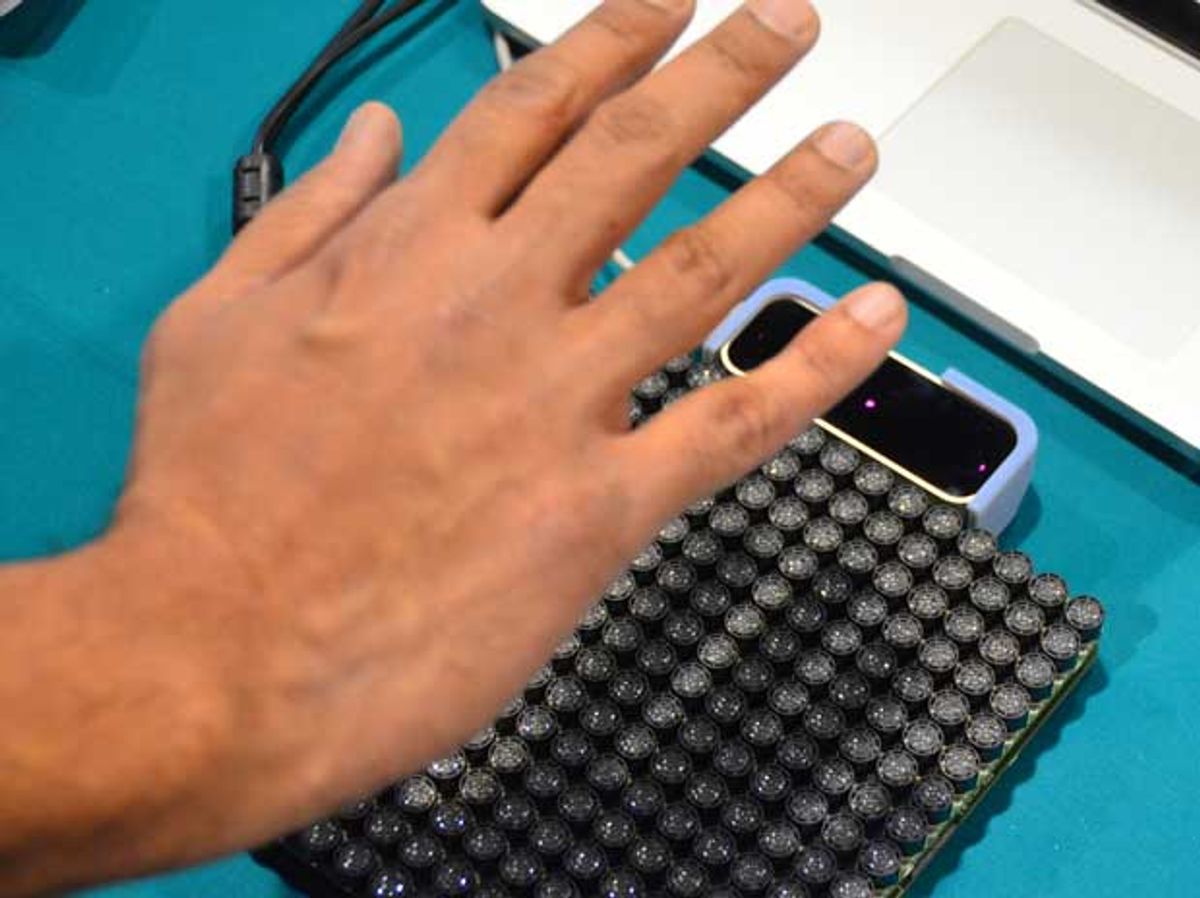At Volkswagen’s CES press conference on Monday, the company introduced the Golf R Touch, a concept car with a cockpit that relies (only a little bit ironically) on touchless gestural interfaces for control. If we’re going to have to use mid-air, hand-wavy interfaces in near the future—whether for cars or wearables or around the home—an important issue to consider (as with any user interface) is tactile feedback. For example, when you press a virtual button in mid-air that doesn’t feel like anything, how do you know that you’ve actually pushed it? Easy: ultrasonic forcefield technology. And it’s amazing.
We wrote about this thing (the “acoustic radiation force field generator”) last month in more of a research context, but yesterday at CES, we got to talk to its developers (from an outfit called Ultrahaptics) and try it out for ourselves.
There’s an array of ultrasonic speakers that (in this demo implementation) are paired with a Leap Motion sensor that tracks the location of your hand in space. By creating constructively interfering intersections of ultrasonic waves, the Ultrahaptics system can generate silent points of turbulence in the air that that essentially trick you into thinking your fingertips are touching objects when they’re not. An array of ultrasonic emitters created this illusion anywhere up to a meter from the sensor (although this distance can be increased). Although the demonstration included a flat array of sensors under the user’s hand, Ultrahaptics says that they can be arranged in different locations and orientations and they can still work together in the same way, as long as its software knows the exact position of the ultrasonic emitters.
Using this thing is very, very cool. It’s much like using the haptic feedback on a cellphone’s software keyboard, except that it comes out of nowhere. Your fingers just feel a gentle buzzing as you hold them in the air over the emitter. It can’t really provide the feeling of texture, but it can do a variety of “haptic sensations,” such as a stream of virtual bubbles moving through the air and softly popping on your fingertips.
The good news, going forward, is that most of Ultrahaptics’ hardware is very inexpensive to produce. Ultrasonic emitters themselves are dirt cheap, because they’re already produced in volume as (among other things) proximity sensors in cars.
Ultrahaptics wouldn’t say exactly when or where we’d see the first consumer product, although they’ve had interest from automotive companies (Hear that, Volkswagen?) and they’re expecting that we’ll be seeing some integrated mid-air tactile feedback systems within the next few years.
Evan Ackerman is a senior editor at IEEE Spectrum. Since 2007, he has written over 6,000 articles on robotics and technology. He has a degree in Martian geology and is excellent at playing bagpipes.




